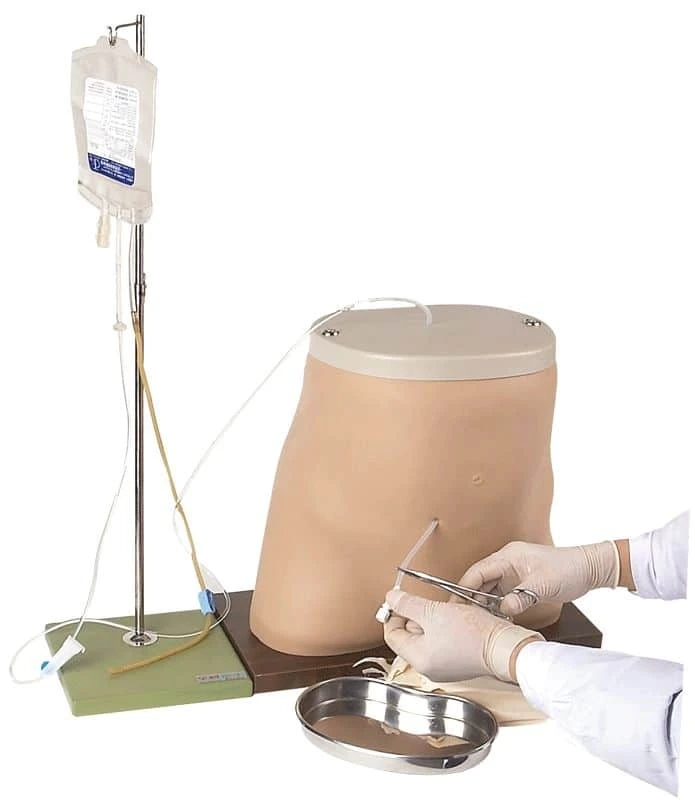correct implantation of the peritoneal dialysis catheter, creation of a subcutaneous tunnel with a downward trajectory, avoidance of trauma and local hematoma, administration of antibiotics preoperatively, correct post-operative care of the outlet;
the observance of the correct technique of the exchanges, the aseptic measures, and the dialysis steps implies good training of the patient and the periodic re-evaluation of the method;
Eradication of Staphylococcus aureus nasal passage through topical antibiotic treatment may reduce the risk of orifice infections. Riverside Nephrology Physicians provide the best Peritoneal Dialysis treatment in USA.
The curative treatment of peritonitis consists of antibiotics, usually administered intraperitoneally. Cyto-bacteriological examination (Gram staining) of the effluent dialysate can guide the initial, empirical therapy. Pending the identification of germs, it is recommended to combine two cephalosporins (Cefazolin or Cephalothin plus Ceftazidime ) or one cephalosporin (Cefazolin or Cephalotine) with one aminoglycoside (Gentamicin).
After obtaining the antibiogram (in 24 - 48 hours), the therapy is adapted. After 4 days, the effectiveness of the treatment is evaluated (clinical symptoms, cytological examination of the dialysate), depending on whether it is decided to continue or modify it. In case of adverse outcome, re-evaluation of the diagnosis (secondary peritonitis) or ablation of the peritoneal dialysis catheter is considered.
The optimal duration of treatment depends on the etiology and clinical course. In peritonitis with Gram-positive germs (except those with Staphylococcus aureus), with single Gram-negative germs, and in those with negative culture, antibiotics should be continued for at least one week after the dialysis becomes clear (or the number of leukocytes decreases <100 / mm3) and the culture becomes negative - which means about 10-14 days in total.
In peritonitis with Staphylococcus aureus, Pseudomonas aeruginosa, combinations of Gram-negative and anaerobic bacilli, 21-day treatment is recommended.
In peritonitis with fungi, the duration should be 28 days.
Enterococcal peritonitis is treated with Ampicillin, possibly in combination with an aminoglycoside. Vancomycin or Clindamycin are indicated for resistance to Ampicillin, and Linezolid or Quinupristin / Dalfopristin are given for Vancomycin resistance.
In peritonitis with Vancomycin-resistant enterococci, peritoneal dialysis catheter ablation should be considered.
Methicillin-sensitive Staphylococcus aureus peritonitis is treated with a generation I cephalosporin. If, after 24 to 48 hours, the response to treatment is unsatisfactory, Rifampicin is added orally.
For Methicillin-resistant Staphylococcus aureus (which involves simultaneous resistance to all penicillins and cephalosporins), Rifampicin + Clindamycin or Vancomycin or Teicoplanin are recommended.
For Vancomycin-resistant Staphylococcus aureus, Linezolid, Daptomycin, or Quinupristin / Dalfopristin may be used.
If the antibiogram shows sensitivity, peritonitis with Escherichia coli, Klebsiella pneumonia, or Proteus is treated with Ceftazidime.
Peritonitis with Pseudomonas aeruginosa requires the combination of Ceftazidime with (at least) a second antibiotic: Piperacillin, Ciprofloxacin, Aztreonam, aminoglycoside, or Trimethoprim-Sulfamethoxazole.
Plurimicrobial peritonitis usually has intra-abdominal, surgical causes.
Peritoneal dialysis catheter ablation is indicated in the following situations:
peritonitis is associated with infections of the outlet and skin tunnel
peritonitis refractory to treatment
peritonitis with Pseudomonas aeruginosa resistant to treatment
fungal and tuberculous peritonitis
secondary peritonitis
recurrent and recurrent peritonitis.
After ablation of the peritoneal dialysis catheter, it is usually recommended to leave a gap of at least three weeks until a new peritoneal catheter is implanted. During this time, the patient is treated with hemodialysis.
Mechanical complications associated with peritoneal dialysis
Leakage of dialysis fluid from the peritoneal cavity may occur early, less than 30 days (5-10%), or late, more than 30 days after implantation (2-4%). They can be externalized at the outlet of the catheter, subcutaneously, vaginally, or pleural (hydrothorax).
Early leakage results from too wide outlets or incorrect suturing of the peritoneum around the catheter. They occur more frequently in obese, elderly patients with diabetes or nephrotic syndrome. The early initiation of exchanges also favors them. It is most often manifested by externalizing dialysis fluid through the wound or the catheter outlet. In case of early discharge, intraperitoneal volumes will be temporarily reduced, or intermittent peritoneal dialysis in a supine position will be used. It is sometimes necessary to discontinue peritoneal dialysis for 1-2 weeks and, if necessary, treat the patient with hemodialysis during this time. For recurrent leakage, surgical reconstruction is required.
Late discharge is a consequence of decreased resistance of the abdominal wall. It is clinically manifested as early discharge but may also have unusual dialysis loss (e.g., vaginally). The treatment is the same as in the case of early discharge. If conservative treatment is not sufficient, the catheter will need to be removed. Riverside Nephrology Physicians provide the best Social Work Services treatment in USA.
0



